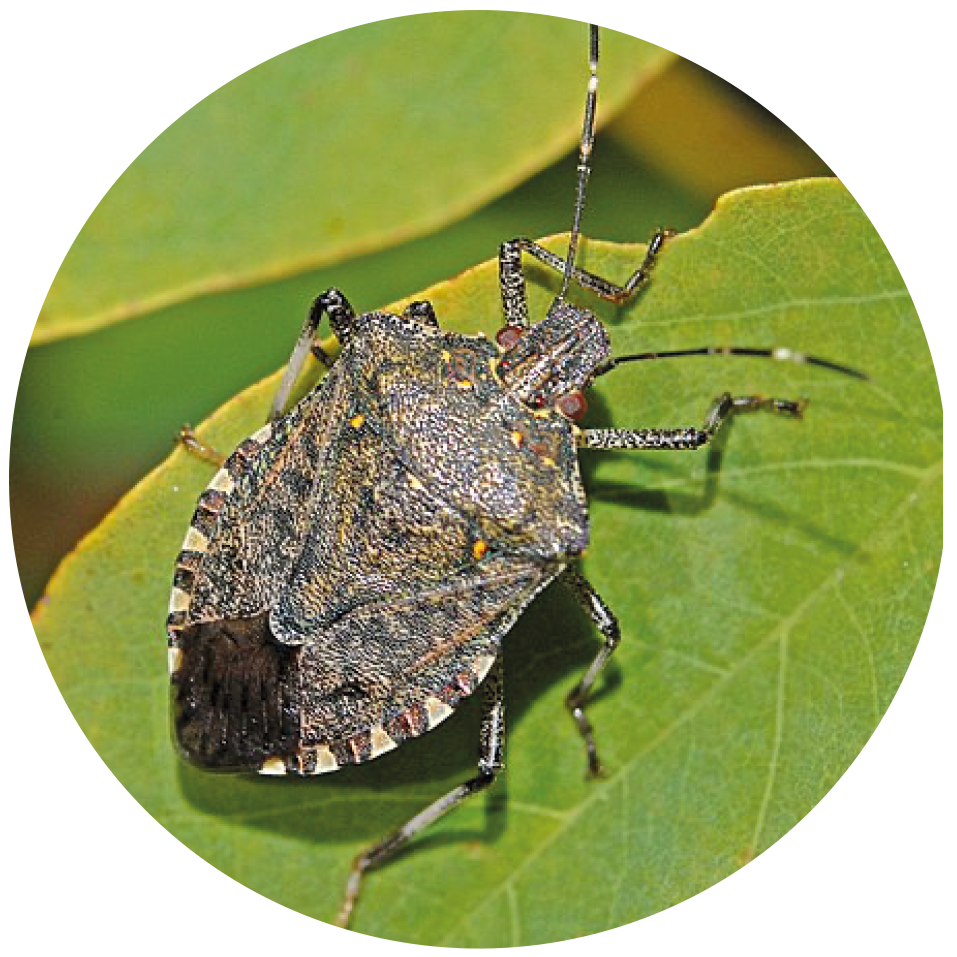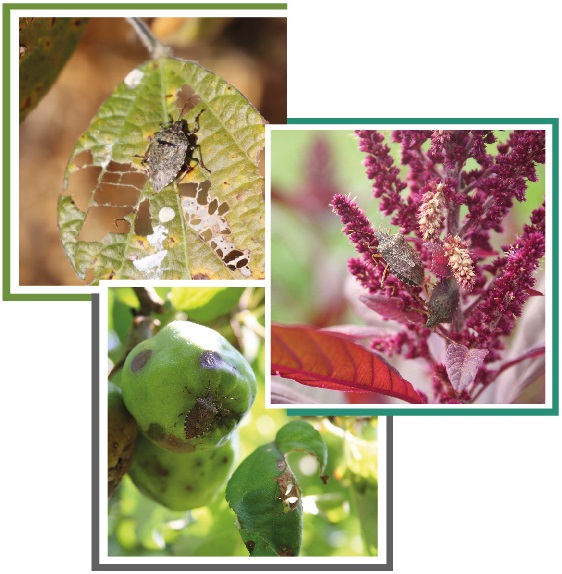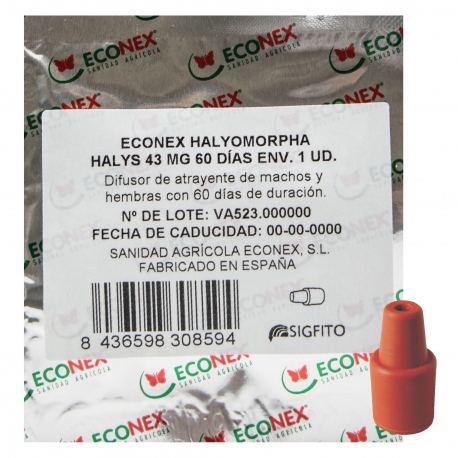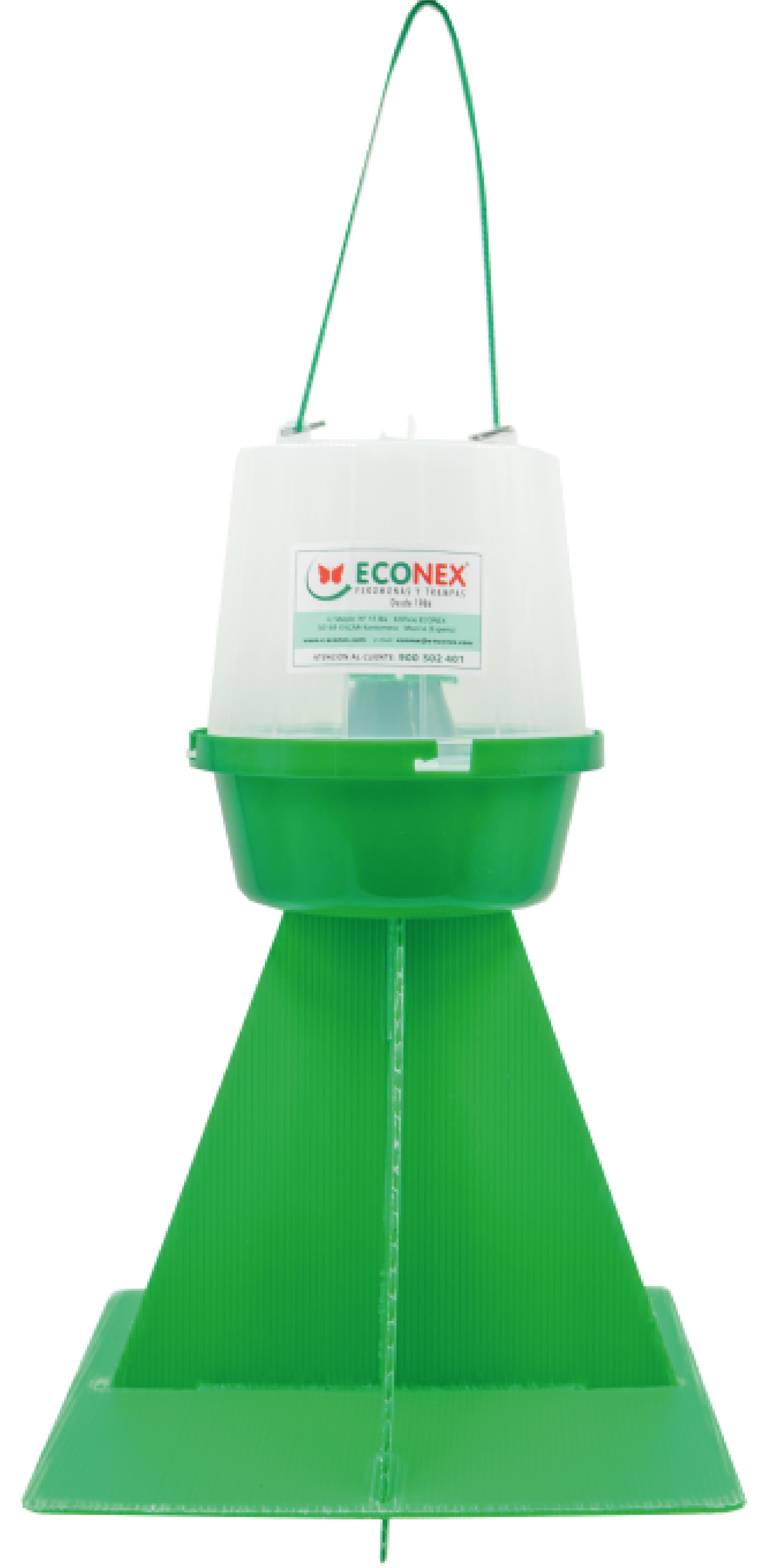Morphology and biology
Adults of Halyomorpha halys measure between 12 and 17 mm in length. Their body is shield-shaped and greyish-brown coloured, which gives them their common name. The presence of alternating white-yellowish and dark bands on the antennae, legs and abdomen help to distinguish them from other similar species. The eyes are reddish in colour and located on the sides of the head.
It normally has two generations per year in temperate climates, but in warmer areas it can have more generations. The life cycle of the brown marmorated stink bug includes two main stages in addition to the adult stage: nymph and egg.
Nymphs go through five stages before reaching adulthood. In the early stages, nymphs are black and red in colour, with no developed wings, and as they grow, their colouring becomes more similar to that of adults.
The eggs are whitish or light green in colour and elliptical in shape. They are laid in groups of 20 to 30 on the underside of leaves.
These insects spend most of their lives as adults, as this stage can last an average of 5 months. However, in climates with very high or very low temperatures, they do not reach this stage.
Damages
The main damage is caused by adults and nymphs of
Halyomorpha halys. With their piercing mouthparts, they suck the juice from plants, causing discolouration on the surface of the fruit and deformities. Adults prefer to feed on fruit, while nymphs also feed on leaves and stems. The damage caused reduces crop yields, as the affected fruit cannot be sold, resulting in significant economic losses.
In green areas, it affects the appearance and health of gardens, causing premature leaf loss by feeding on ornamental plants and trees. In winter, it seeks shelter in buildings and when disturbed, the brown stink bug releases a strong odour, making its presence unpleasant for humans.












